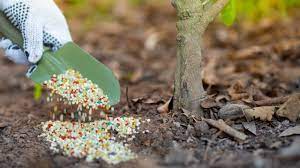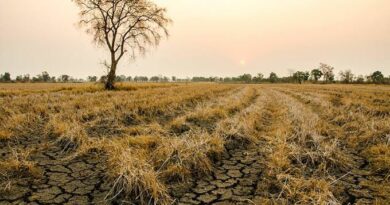Proper Fertilizer Applications Guide
Proper fertilizer application or fertilization is important for crop yield and quality. For the greatest fertilizer nutrient use efficiency, it is important to select the right source, the right method, the right timing, and the right rate of application (the 4Rs framework).
The amount and timing of nutrient uptake depend on various factors including variety, planting date crop rotation, soil and weather condition. Timing and quantity should be chosen in such a way that as much as possible of the nutrients is used by plant.
Nutrient should be applied, as near to the time the crop needs them to ensure optimum crop use efficiency and to minimize the potential of environmental pollution.
This is particularly important for mobile nutrient such as nitrogen, which can leach out of the soil profile if not taken by roots. In this article, fertilizer sources, application methods, and timing are discussed.
Fertilizer Application Methods
There are several factors to consider when choosing fertilizer application methods. Considerations include: the particular mixture of nutrients needed, the crop, and timing of application, available equipment, and planting/tillage practices.
Application methods include starter application (banded or popup/furrow), broadcasting, topdressing, side-dressing, or foliar feeding. A description of each of these application methods and their pros and cons for use are described in Table 2.1.
Table: Application method descriptions as well as the pros and cons of using each application method
| Application methods | Description | Characteristics |
| Band Placement | Small amounts of liquid or granular fertilizer is applied in furrows 1-2 inches below and 2-3 inches to the side of seed placement | Liquid or dry fertilizer Nutrient uptake efficiency is higher than for broadcast application, allowing for lower rates. Runoff risk is low. Equipment is standard on many planters Fertilizer placement in vicinity of roots may aid root development. Requires precision placement to avoid placement too close to the seed. |
| Furrow/pop- up/starter application | Application method used alone or combined with banded application. Usually applied in low rates placed directly on or around the seed during planting. | Liquid fertilizers are best suited. Can be applied in combination with banded fertilizer during planting. Only low rates needed. Can only be used in low rates to avoid phyto-toxicity. |
| Broadcasting | Spinning of dry granules or spraying of liquid fertilizer onto the soil surface, with or without incorporation of the material | Can be done quickly. Standard equipment used. Depending on the source , it requires rainfall or tillage to move fertilizers to roots – Could result in poor application uniformity. |
| Top dressing | Spreading or broadcasting of fertilizers in the standing crop, after emergence. | Fast and easy application of fertilizer. Can result in volatilization losses for urea containing sources Could cause leaf burn. Could result in poor application uniformity. |
| Side dressing | Broadcast or banded between or alongside growing plants; this method normally refers to N applied when corn is 6-12 inches tall. | N can be applied with a high nutrient use efficiency. Application with drop nozzles can be done faster than injection or knifing. Weather and field conditions can delay or prevent application. |
| Foliar feeding | Application where liquid fertilizer is applied directly to the leaves, nutrients are in highly available form and can be taken up by the plant rapidly. | Easy application. Standard sprayer equipment can be used. Not always practical due to row spacing. Material must be absorbed by leaves before it dries. |
1. Band Placement
Band placement refers to applying fertilizers into the soil, but with special reference to the location of the seed or plant. When the fertilizer is placed close to the seed or plant the application is said to be localized.
The placement of solid fertilizers can be done with the help of simple implement (e.g. ploughs) and such hand-tools as hoes.
2. Row Placement

Hill or row placement refers to applying the fertilizers either in bands or localized areas near the plants or along the planted row, but often in a definite space relationship to the seed or plant.
This method allows for a greater availability of nutrients by reducing losses of P and K through fixation than when fertilizers are mixed with the soil.
The greatest hazard of placing fertilizers near the seed is that germination may sometime be hindered or the young plant damaged by an excessive concentration of soluble salts, if the materials are put too close to the seed or plant. Such injury is greatest in dry sandy soils.
3. Broadcasting
The main objectives in broadcasting are to distribute the fertilizer evenly and to incorporate it with part of, or throughout the plough layer. Broadcasting is also employed when applying large quantities of fertilizers that can be easily applied at the time of planting.
In broadcasting, the fertilizer is spread over the entire soil areas to be treated, either before the land is ploughed, immediately before planting or while the crop is growing.
The latter is usually referred to as side dressing if the crop is in wide rows, and as top-dressing if the crop is in narrow rows or not in rows.
Delayed applications of nitrogen are made, commonly as top-dressing; top dressing of P and K are ordinarily made only on pasture that occupies the land for several years.
4. Top Dressing
It is the broadcasting of fertilizers particularly nitrogenous fertilizers in closely sown crops like paddy and wheat, with the objective of supplying nitrogen in readily available form to growing plants. The main disadvantages of application of fertilizers through broadcasting are:
Nutrients cannot be fully utilized by plant roots as they move laterally over long distances. The weed growth is stimulated all over the field.
Nutrients are fixed in the soil as they come in contact with a large mass of soil.
Read Also : Fertilizer Handling and Storage Guide
5. Side Dressing
It refers to the spread of fertilizer in between the rows and around the plants. The common methods of side-dressing are; Placement of nitrogenous fertilizers by hand in between the rows of crops like maize, sugarcane, cotton etc., to apply additional doses of nitrogen to the growing crops and placement of fertilizers around the trees like mango, apple, grapes, papaya etc.
6. Fertilizing Tree Crops/ Plants
The method of fertilizer application to tree plants is often a compromise between broadcasting and localized placement. Often, the fertilizer is broadcast under the tree to a distance of 30 – 60cm beyond the spread of the branches.
On the other hand, when a cover or green manure crop is grown between the trees, a large part of the fertilizer may be applied to this crop. In forest zones and on very sandy soils the fertilizer application may be repeated several times during the season.
7. Foliar Application of Fertilizer
Liquid fertilizer is applied direct to the foliage of a crop for maximum utilization. This is often advantageous when the soil contains insufficient moisture or when its physical and chemical conditions are otherwise unfavorable.
This method is useful in correcting micronutrient deficiencies in tree or orchards, and arable crops.
8. Application through Irrigation Water (Fertigation)

It refers to the application of water soluble fertilizers through irrigation water. The nutrients are thus carried into the soil in solution.
Generally nitrogenous fertilizers are applied through irrigation water.
9. Injection into Soil
Liquid fertilizers for injection into the soil may be of either pressure or non-pressure types.
Non-pressure solutions may be applied either on the surface or in furrows without appreciable loss of plant nutrients under most conditions.
Anhydrous ammonia must be placed in narrow furrows at a depth of 12- 15 cm and covered immediately to prevent loss of ammonia.
10. Aerial Application
In areas where ground application is not practicable, the fertilizer solutions are applied by aircraft particularly in hilly areas, in forest lands, in grass lands or in sugarcane fields, etc.
Best Fertilizer Application Rate
Fertilizer rate is the quantity (weight) of fertilizer that should be applied per unit area of farm land for a given crop. Rate can be expressed as weight of straight carrier (or mixture of a given ratio) per hectare.
Consider the following hypothetical examples: 300kg of a 15:15:15 NPK mixture per hectare, 150kg of ammonium sulphate per hectare. It is gradually becoming more conventional to express rate of fertilizer application in terms of weight of active ingredients per unit area of land, in which case the quantities by weight, of straight carriers that will supply them have to be proportionately calculated, so long as the analysis of the constituent is true.
Best Timing of Fertilizer Application
Selecting which fertilizer source to use begins with evaluating which nutrients are required for optimal plant growth and at what time during crop growth these nutrients are taken up in the largest amounts.
Field crops typically take up most of their nutrient requirements during the rapid vegetative growth phase followed by a decline in nutrient uptake as the plants mature.
Because of this non-uniform demand, the highest nutrient use efficiencies can be obtained when application is timed to coincide with the period of greatest nutrient demand.
For example, the highest N use efficiencies in corn are typically achieved when a small amount of N is banded as a starter at planting.
This is followed by a side-dress application when the corn is 6-12 inches tall, just prior to the rapid vegetative growth phase of the corn.
Side- dressing is especially important for N applications to sandy soils in areas of high rainfall where leaching losses can be high or for soils and weather patterns that favor early season denitrification.
For such soils, the use of a nitrification inhibitor can help reduce N loss to the environment and hence increase the N use efficiency of the fertilizer.
In summary, when fertilizers are applied appropriately and in the correct dosage, it will enhance vegetative growth in plants, keep the environment healthy.
Leaf canopy protects the soil from the direct impact of raindrops, which could result in soil erosion.
The life of microorganisms living beneath the soil and animals is protected. During eutrophication, fertilizer elements are eroded into the rivers and lakes for the nutrition of aquatic life. The ecosystem is maintained and biodiversity rejuvenated.
If fertilizer is needed to supplement nutrients already on the farm (manure, cover crops, previous crop residues etc.), it is important to select the right material, and to apply it at the right rate, the right place, and the right time (4Rs).
By understanding what each fertilizer offers with respect to nutrient availability, and ease of handling and application, producers are better able to meet the needs of their crops.
Read Also : Comprehensive Guide to Dry Beans Production









